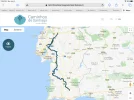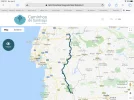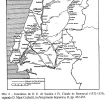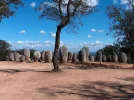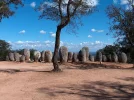Friend from Barquinha
Veteran Member
- Time of past OR future Camino
- None yet; perhaps the Portugese (2021?)
In the last year or so, there has been a fair bit of local Portuguese-language press coverage discussing how the tourism ministry, etc. can both help peregrinos in Portugal, and benefit from their presence.
Today, in looking over some of this local stuff, I came across this website. Apologies if you've seen it before--it provides the best and most complete information I've seen about walking from the Algarve up to the Tejo (Tagus).
 www.caminhosdesantiagoalentejoribatejo.pt
www.caminhosdesantiagoalentejoribatejo.pt
And they've put together a lovely video. I wish they'd covered our area as well--but thanks to the peculiarities of how the country's divided up in tourism districts, they've stopped just south of us in Golega--with a few quick shots of the Quinta da Cardiga, a lovely almost-abandoned manor house on the path from Golega to Vila Nova da Barquinha.
(or in Portuguese)
Bom caminho e feliz ano novo!
Today, in looking over some of this local stuff, I came across this website. Apologies if you've seen it before--it provides the best and most complete information I've seen about walking from the Algarve up to the Tejo (Tagus).
Caminhos Santiago – Turismo do Alentejo
Turismo do Alentejo
And they've put together a lovely video. I wish they'd covered our area as well--but thanks to the peculiarities of how the country's divided up in tourism districts, they've stopped just south of us in Golega--with a few quick shots of the Quinta da Cardiga, a lovely almost-abandoned manor house on the path from Golega to Vila Nova da Barquinha.
(or in Portuguese)
Bom caminho e feliz ano novo!







